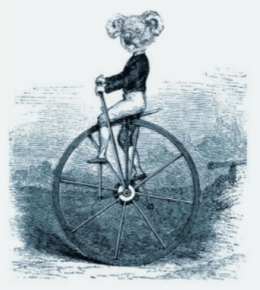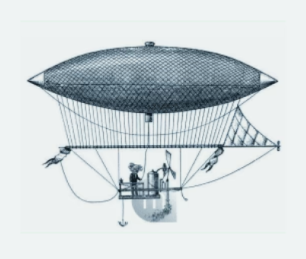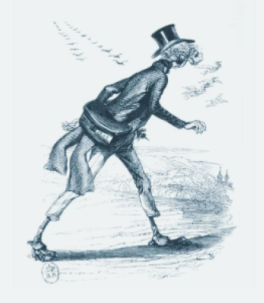You've probably heard of the Montessori method , but do you know what a Montessori bed is, and what are its advantages & disadvantages?
What is a Montessori Bed?
A Montessori bed, inspired by the educational philosophy of Maria Montessori , is a bed specially designed for children that stands out for its low and accessible design.
This unique feature allows your child to get in and out of bed without adult help once they can move around on their own, encouraging greater independence from a young age.
Unlike traditional children's beds which are often raised with fairly high safety rails, the Montessori bed is placed on the floor or slightly raised, thus eliminating the risk of falls.
In short, a Montessori bed is not just a piece of furniture, but it is already a "tool" that contributes to the overall development of the child.
The advantages of the Montessori Bed
Using a Montessori bed offers many benefits that can have a significant impact on your child's development.
It promotes independence
The first notable benefit is that it promotes independence . By allowing your child to get in and out of bed as they please, the Montessori bed encourages autonomy and decision-making .
This can help develop a sense of independence and self-confidence from an early age , skills that will benefit your child throughout his or her life.
It encourages freedom of movement
In addition, the Montessori bed encourages freedom of movement .
Unlike traditional beds that can restrict a child's movements, the Montessori bed offers your child the opportunity to explore their environment safely in their evening ritual (with you when they are very young, then independently when they are older).
This can be particularly beneficial for children in the motor development phase, as it allows them to move freely and explore their environment at their own pace.
It develops self-confidence
Finally, the Montessori bed can help develop your child's self-confidence .
By giving them the opportunity to make decisions, such as when to get up and when to go to bed, deciding which book to pick up to read with you, your child learns to trust their own abilities and make decisions for themselves.
This can build their self-esteem and confidence in their own abilities, which is essential for their emotional and social development.
The Disadvantages of the Montessori Bed
Potential security risks
However, there are also some drawbacks to consider. One of them is the potential safety risk. Since your child can move around freely, he or she could get injured if the room is not free of risks.
So, if you choose this type of bed, make sure that no dangerous objects are within reach of your child or that their possible movements cannot put them in danger.
It can disrupt sleep
Another downside is that it can disrupt your child's sleep. If your child wakes up at night, he may be tempted to play instead of going back to sleep depending on the stimulation offered in the room and if you are not there to encourage him to go back to sleep (if you are not / no longer in co-sleeping, for example).
How to Choose a Montessori Bed for Your Baby
Choosing the right bed for your baby is an important decision that requires careful consideration. Do you want a Montessori bed or not? A bed that will last for several years or on the contrary one that you will have to change regularly to keep up with your child's growth?
There are several factors to consider to ensure that the bed you choose is not only safe and comfortable, but also suitable for your child's changing needs.
Here are some things to consider when choosing a Montessori Bed:
Safety Considerations
When choosing a Montessori bed, safety should be your priority. Make sure the bed is stable and there are no sharp corners or detachable parts that could hurt your child.
In addition to these aspects, at Maison Continuum we - when creating our Cododo Cabin Bed - wanted to completely eliminate the risk of falling during sleep. The small barriers do not obstruct the view, nor the possibilities of entering and exiting the bed but prevent falls during sleep.
Ventilation
Another factor to consider is ventilation.
You may be tempted to put a mattress on the floor. Why not! On the one hand, this solution is economical, and if the environment is well ventilated, without any humidity, it is possible that it is possible.
But there is still the risk of poor ventilation, which in the long term can harm your child (and the mattress if mould develops due to poor ventilation).
Here too, with our Co-sleeping Cabin Bed and its base raised by a few centimetres, you ensure good ventilation of the mattress and good quality sleep for your baby.
When choosing a Montessori bed, make sure it offers good ventilation to maintain a healthy sleeping environment.
Size and design
Size and design are also important. Choose a bed that fits your child's size and the space available in their room. The design should be attractive to your child, but also functional.
The Maison Continuum Co-Sleeping Cabin Bed, for example, comes in two sizes. The larger one, 140 x 200 cm , is very easy to co-sleep and can follow your little explorer throughout their growth and even up to adult size!
The smaller version, 90 x 190 cm , also allows co-sleeping as long as your child is not too big, while taking up less space in the room. It will still be able to accompany your little explorer for many years given its dimensions.
Quality materials
Finally, make sure the bed is made from quality materials. It should be durable and able to withstand daily wear and tear as well as free from harmful products (like the Maison Continuum Cododo Cabin Bed, but is it worth mentioning 😉)
A Montessori bed can be a great choice for your baby. It promotes independence, encourages freedom of movement, and builds self-confidence. However, there are also drawbacks to consider, such as potential safety risks, sleep disruption, and the need for increased vigilance.
When choosing a Montessori bed, be sure to take these factors into account. We can only advise you to opt for a bed of this type, especially in the context of co-sleeping to strengthen attachment bonds and simplify your nights!
Frequently Asked Questions
-
What is the appropriate age to start using a Montessori bed? There is no specific age, but most parents start using a Montessori bed when their child begins to move independently, usually around 18 months to 2 years. At Maison Continuum, we recommend it from birth, in co-sleeping with one or both parents on a long-term basis or when your baby needs it (illness, teething, night terrors, etc.).
-
Is a Montessori bed safe for my baby? Yes, provided that all safety precautions are taken, that the standards are respected. Make sure that your child's room is safe and that the bed is stable and safe.
-
How can I encourage my child to stay in their Montessori bed at night? You can establish a regular bedtime routine and make the bed as comfortable as possible. You can also use (small) bed rails to help contain your child like the ones on the Maison Continuum Co-Sleeping Cabin Bed .
-
Do I need to use a specific mattress with a Montessori bed? No, you can use any mattress that is suitable for the size of the bed and a baby/child. It is recommended to use a firm mattress for young children, you can read our article "Choosing the best floor bed for your baby and child" to read more about this.
-
Are all Montessori beds the same size? No, Montessori beds come in a variety of sizes. Choose a size that fits the space available in your child's room and your child's height and future growth.




